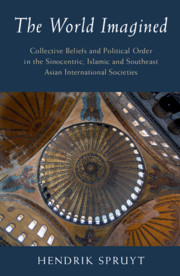 The World Imagined
The World Imagined Book contents
- The World Imagined
- LSE International Studies
- The World Imagined
- Copyright page
- Dedication
- Contents
- Figures
- Preface
- Acknowledgments
- A Note on Transliteration
- 1 Introduction
- Part I Beyond the Westphalian Gaze
- Part II The East Asian Sino-centric Order
- 4 Gathering All under Heaven
- 5 The East Asian Interstate Society and the Westphalian System
- Part III The Islamic Cultural–Historical Community
- Part IV Collective Imagination among the Polities of Southeast Asia
- Bibliography
- Index
5 - The East Asian Interstate Society and the Westphalian System
from Part II - The East Asian Sino-centric Order
Published online by Cambridge University Press: 18 June 2020
- The World Imagined
- LSE International Studies
- The World Imagined
- Copyright page
- Dedication
- Contents
- Figures
- Preface
- Acknowledgments
- A Note on Transliteration
- 1 Introduction
- Part I Beyond the Westphalian Gaze
- Part II The East Asian Sino-centric Order
- 4 Gathering All under Heaven
- 5 The East Asian Interstate Society and the Westphalian System
- Part III The Islamic Cultural–Historical Community
- Part IV Collective Imagination among the Polities of Southeast Asia
- Bibliography
- Index
Summary
This chapter clarifies the nature of interstate relations and challenges the claims that the Chinese tributary system could not adjust to the Westphalian system. The alleged incompatibility between East Asian conceptions of international order and the Westphalian system is overstated. This chapter surveys arguments that intellectual stagnation and a myopic worldview caused Chinese decline and eventual collapse. Instead, it is argued that China engaged in intellectual adjustment to meet the global pressures caused by the imperial colonial powers. This adjustment and change in the collective imagination also carried over into the political realm.
Keywords
- Type
- Chapter
- Information
- The World ImaginedCollective Beliefs and Political Order in the Sinocentric, Islamic and Southeast Asian International Societies, pp. 133 - 164Publisher: Cambridge University PressPrint publication year: 2020
